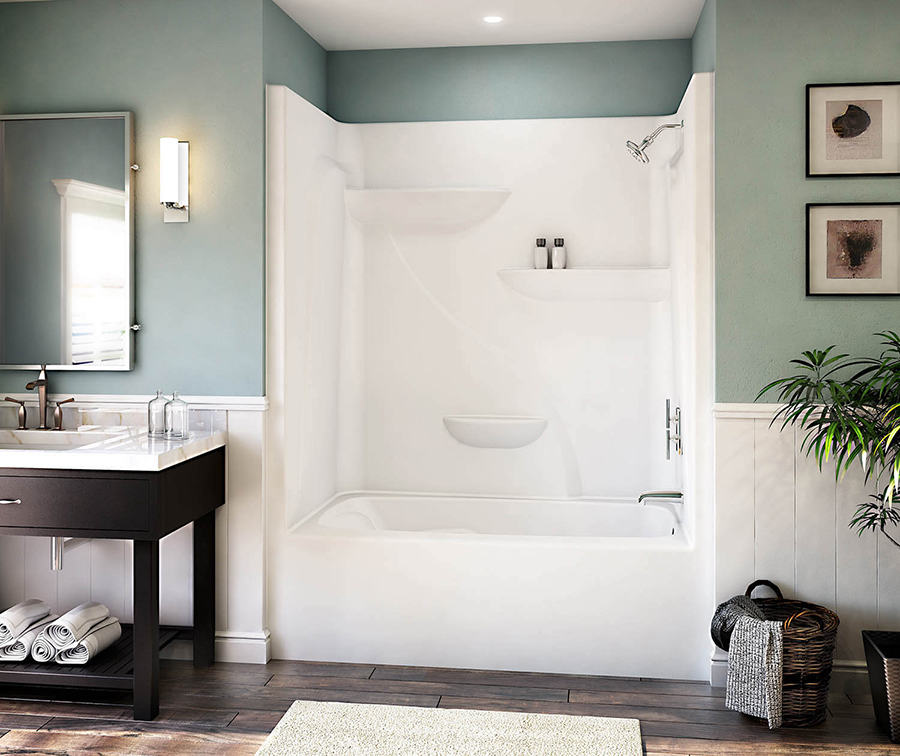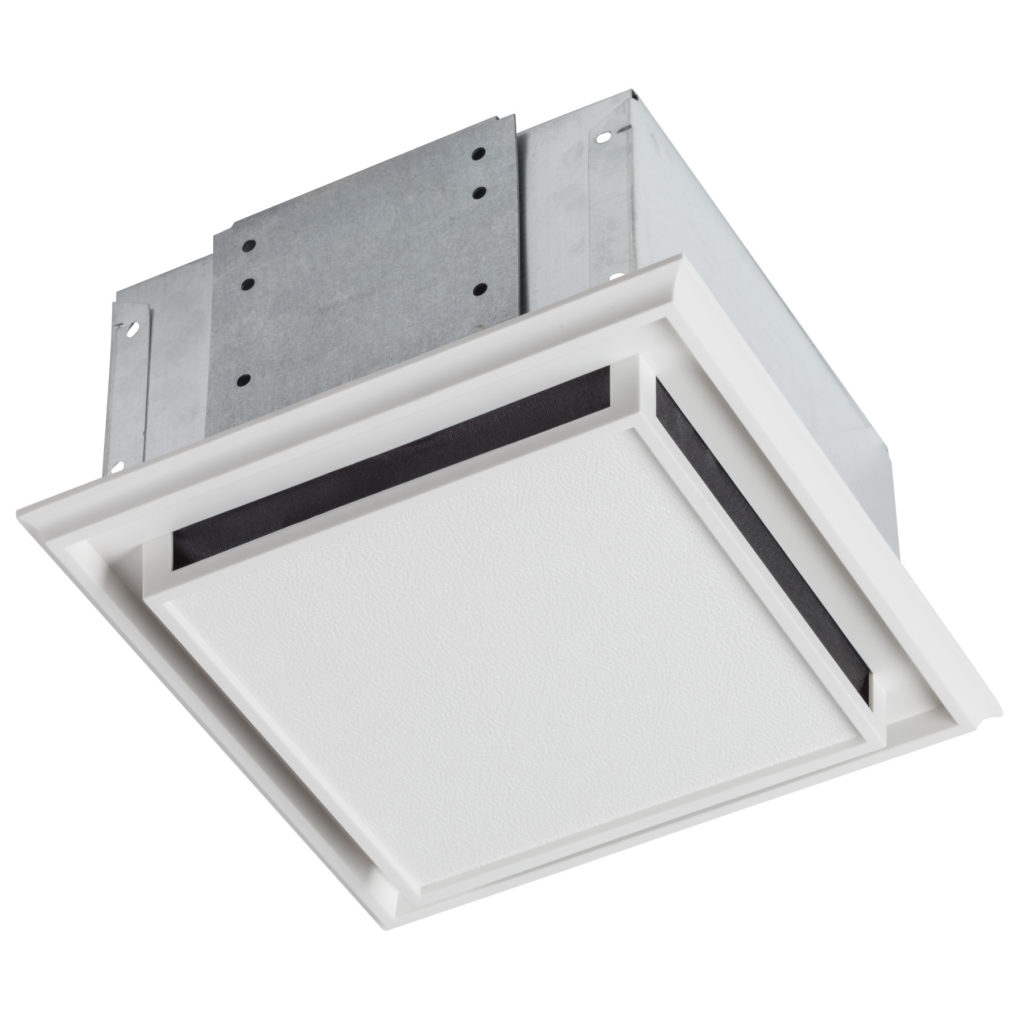What is a cesspool?
A cesspool is a precursor to the modern septic tank system. The concept uses a pit in the ground that is usually lined with stone, concrete, or brick. Wastewater from the home enters the cavity, where it is held until it can seep into the earth through the holes in the sides of the pit or through the bottom.
Historically, cesspools were built with stone or brick with gaps in the walls. More recently, cesspools are most commonly made from sections of concrete cylinders with holes in the sides. They resemble a well liner, except for the holes, and are buried underground. They are also sometimes pre-formed tanks with perforated exteriors. However, these are pretty old and are rarely found anymore.
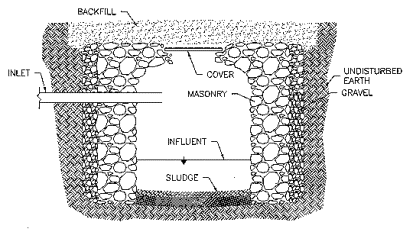

How big/deep are they?
The average cesspool will usually measure a minimum of 5 feet in diameter and be quite deep. Newer systems are measured in how many gallons the container can hold rather than dimensions. Your cesspool container may be able to hold at least 750 to 1500 gallons of waste on average.
Problems with cesspools
Minimal waste breakdown or filtration
One of the biggest problems associated with cesspools is that there is no waste filtration. This means that all bacteria and debris seep directly into the soil. This is a terrible problem for coastal towns, where the waste can leech into the ocean. It has led many coastal cities to pass laws outlawing and requiring the immediate decommissioning of cesspools within a specific range of the water.
This will also apply to people that live near rivers and lakes. Cesspools can negatively affect the water quality leading many municipalities to take steps to preserve their rivers and lakes, just as the coastal cities have done.
Blockage over time
Another issue is that cesspools commonly develop a film of scum the longer they are in use. As this happens, it will clog the holes in the sides of the cesspool and cause it not to be able to drain correctly.
You will have to be more cautious of what you flush with a cesspool. Due to the design, it is more prone to clogging than some other drainage options, which means that you can’t flush things such as:
- Feminine hygiene products
- Powder soap, only liquid soap can be used
- Anything that is plastic
- Sanitary wipes, even if they say they are flushable
- Animal fat
- Any paper products other than toilet paper
In some cases, homeowners would dig a second cesspool when the first began to fail. They would be piped in series, meaning that waste would flow into the original cesspool, then spill into the second cesspool once the first began to fill.
Are cesspools still legal?
The legality of a cesspool will mostly depend on what state you live in. Some states have outlawed them entirely and will force you to replace the cesspool with a septic tank or city sewer connection.
Some states may require either of the parties involved in the sale of a home to remove and replace the cesspool with a modern septic system as part of the requirements of the sale.
Other states have passed laws that once your cesspool begins to fail, then you must replace it. This is more of a passive approach to the repeal of cesspools.
Lastly, some states have not passed any laws regarding the matter. Some states have chosen to allow the public to make the choice themselves. However, as the industry has moved away from installing and maintaining cesspools, the public has also become less interested in keeping cesspools.
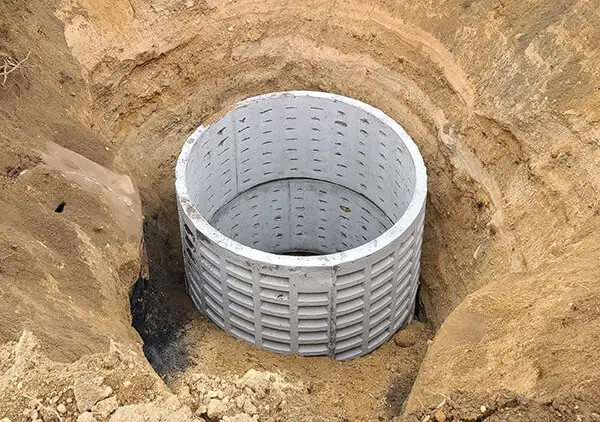
What does the code say?
There are 20 states in the U.S. that have adopted some form of the International Private Sewage Disposal Code (IPSDC). It’s a model code that states and municipalities can adopt to regulate the construction or alteration of private sewage disposal. It provides the minimum standards to protect humans and the environment from unsanitary conditions. You can learn more about the code here.
This code defines a cesspool as “a covered excavation in the ground receiving sewage or other organic wastes from a drainage system that is design to retain the organic matter and solids, permitting the liquids to seep into the soil cavities.”
This code states that cesspools shall be prohibited, except where approved by the code official.
Where they are permitted, they need to be a minimum of 5′ inside diameter and have a perforated sidewall material with a minimum sidewall of 20′ below the inlet opening. The bottom is left open to the earth.
What is the difference between a cesspool versus a septic system?
There are a few similarities: both systems utilize a holding “tank” which wastewater from the home enters into. The solid matter sinks to the bottom while the lighter materials float to the top. Both will need to be pumped occasionally. But this is about where the similarities end.
Cesspools have a “tank” that is perforated. This can be in the form of open masonry joints or holes in the concrete or plastic tank. These perforations allow the wastewater (or anything else) to seep into the surrounding ground. These holes often get clogged easily, resulting in the need to pump the cesspool out regularly. There is also much less time and opportunity for waste to be broken down by bacteria before entering the earth.
Septic tanks are large rectangular boxes buried in the ground but are sealed. The waste from your home will flow into the septic tank on one end, the heavy material will sink, and the light material will float just like a cesspool, but there are filters and baffles that help to separate solids or inorganic material from the wastewater.
The partially filtered wastewater works its way to the other end of the tank to a pipe that exits the septic tank. This pipe will lead to a drain field comprised of multiple lines that will allow the wastewater to spread across a large area.
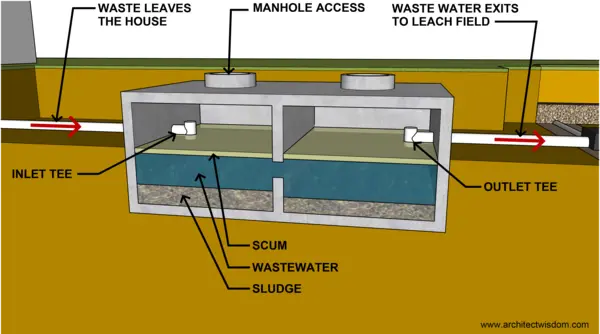
How do I know if I have a cesspool or septic tank?
If your home was built before 1973 and has not had any significant additions, then it is possible that you still have a cesspool. But the best way to tell if you have a cesspool will either be to open the cover of your septic system yourself or have a professional do it and see what the pit is made of.
Septic tanks will often have two covers on top of them and will commonly be entirely buried. A standard cesspool will only have one cover. However, if your cesspool system has more than one pit, each pit will have its own individual cover.
If you can see that the walls are cinder blocks, brick, or if it has openings in the sides, you have a cesspool. If you open the lid and see solid concrete walls or a plastic enclosure, it will be a septic tank.
Do cesspools require maintenance?
Cesspools do require maintenance. Since the cesspool has holes in the side and so much of the waste material gathers in the bottom, they may become clogged. This will require the cesspool to be pumped and cleaned out so that it will drain adequately once again. You will need to pump your cesspool out every couple of years to maintain it.
Should I replace my cesspool with a septic system?
Due to the cesspool requiring excessive maintenance, its high rate of failure, and its damage to the soil and environment around it, it is highly recommended to replace it with a much more environmentally friendly septic tank system.
This will depend on where you live. As some states have already made it illegal to be utilizing a cesspool, you will have to replace it immediately upon discovery. In other cases, a cesspool will have to be replaced when the home is sold.
Other states will not allow you to repair it, so you will only have to replace it once it begins to have issues.
What states are left will not dictate what you can and cannot do with your cesspool, but it is recommended that you replace it with a septic system.
What to consider when buying a house with a cesspool?
If you are considering buying a property with a cesspool or a septic tank, it will be a good idea to have a professional company inspect the septic system and leach field to ensure that it does not have any problems or require any expensive repairs. This should be done regardless of the system in use.
When looking at a home with a cesspool, you will want to consider the upkeep cost. If it’s near the end of it’s life, you may need to pump it out relatively often or eventually replace it.
You should discuss the maintenance schedule of the cesspool with the previous owner to see if they had any issues.
Be aware of any laws regarding cesspools in the state you are in. If you are not legally allowed to repair it, you may be left with an expensive replacement bill soon.
Also ensure that if the state the house is in requires a cesspool to be replaced during a sale, that the responsibility is discussed as part of the sales agreement.
In conclusion
Cesspools are lined pits in the ground that drain the waste through holes in the sides, while septic tanks allow the filtered waste to enter a drain field where the effluent can be deposited across a large area of land. Cesspools are becoming outdated, while septic tanks are standard for homes in municipalities that do not have a sewer system.
Do you have any experience with cesspools? Let me know if the comments below.

